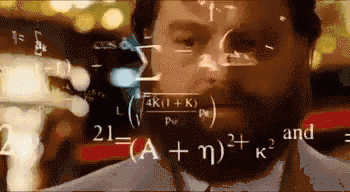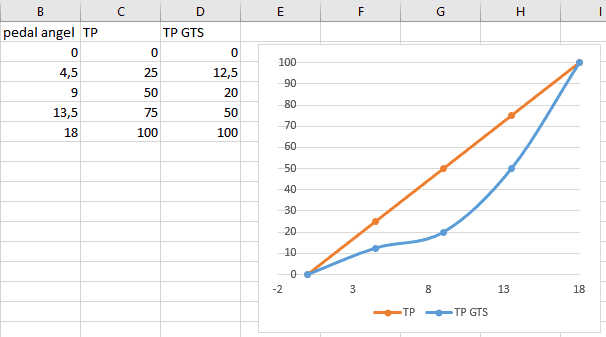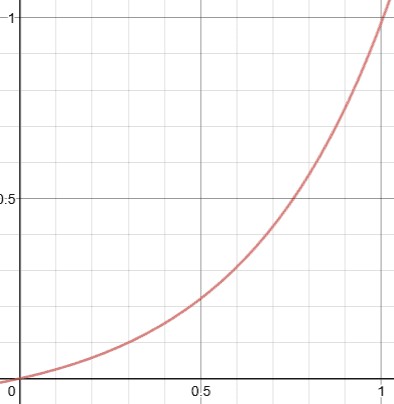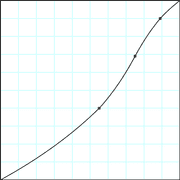OK, science time. I've always been of the opinion that there's something we don't know about the throttle indicator, and my theory is that it's not showing actual power as many people seem to think, it's showing the percentage of the throttle opening with 0% being fully closed and 100% being fully opened, flat in the airflow. The engine always makes more power than the percentage of the throttle opening as the flowing area of the throttle body cross section grows very rapidly at even minimally small opening angles.
As far as physics goes, doubling the speed (as long as it's limited by lack of power) needs eight times the power as the air resistance increases in the square of speed and there's only half the time to produce the power, thus the necessary power increase is the desired speed increase in the power of three. To put it short: if a 200 bhp car does 200 km/h, making the same car do 400 km/h will take 1600 bhp.
Taking the graphs of
@symaski62 and
@Skinny McLean as starting points, I took a stock BMW M4 to SSRX. A great car for such a test as the power curve is flat on a wide area, the rpm won't affect the power and all tests were done in the 6th gear which is where the car attains its maximum speed. I tested with the throttle bar at 50%, 75% and 100%.
First, the assumption that the throttle bar shows the actual power the engine is producing.
50% throttle: 278 km/h
75% throttle: 308 km/h
100% throttle: 318 km/h
The speed increase between 50% and 100% throttle is 40 km/h, in other words the increase was 14,4%. To get such an increase in speed the power would have to be increased by nearly exactly 50% but that's not the case, it takes 100% more to get there. Between 50% and 75% throttle the difference is 30 km/h, translating to 10,8% that should be taken care of with a 36% increase but it takes 50% more to get there. And finally the gap from 75% to 100% throttle is a mere 10 km/h, only 3,2% that should need a power hike of 10% to accomplish but in this case it takes 33% more to do it.
The verdict: the throttle bar doesn't show actual power, it shows very much less.
If the 50/75/100 points are actually 75/90/100 (the actual pedal position approximated from the graphs) the results look quite different.
75% pedal travel: 278 km/h
90% pedal travel: 308 km/h
100% pedal travel: 318 km/h
The speed increase between 75% and 90% pedal travel is 40 km/h, in other words the increase was 14,4%. To get such an increase in speed the power would have to be increased by nearly exactly 50% but that's not the case, it only takes 33% more to get there. Between 75% and 90% pedal travel the difference is 30 km/h, translating to 10,8% that should be taken care of with a 36% increase but it only takes 20% more to get there. And finally the gap from 90% to 100% pedal travel is a mere 10 km/h, only 3,2% that should need a power hike of 10% to accomplish and that's just about exactly what happens here.
The verdict: the pedal travel doesn't control actual power either but it's closer.
At 50% throttle bar, 75% of pedal travel, the engine is producing roughly 66% of its power. At 75% throttle bar, 90% pedal travel, it's producing roughly 90% power. With those figures all the differences match - a 50% increase between 66 and 100, a 36% increase between 66 and 90, and a 10% increase between 90 and 100.
The final verdict: the throttle
is non-linear, but to a much smaller extent than people think, and the throttle bar graphic is completely useless.








